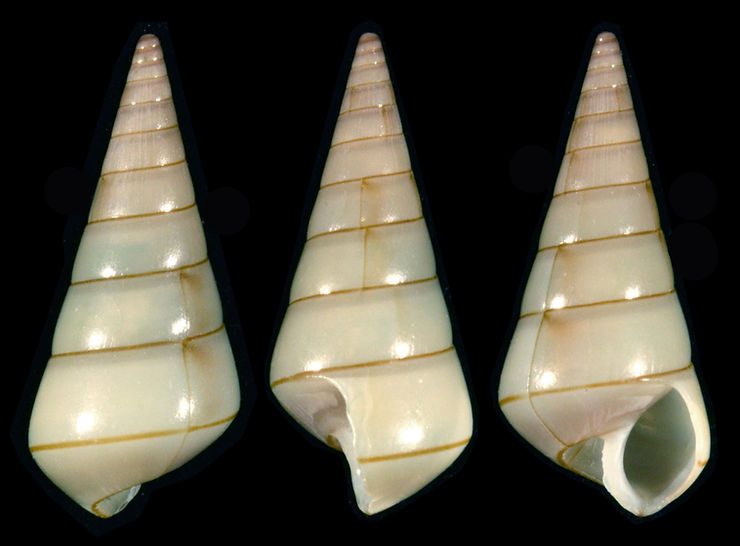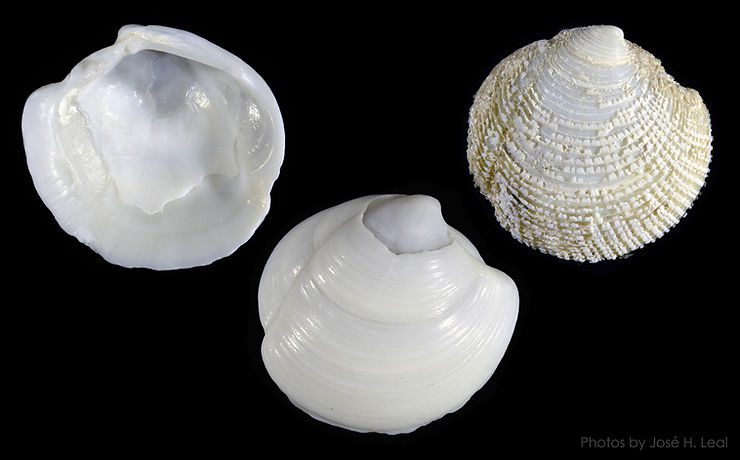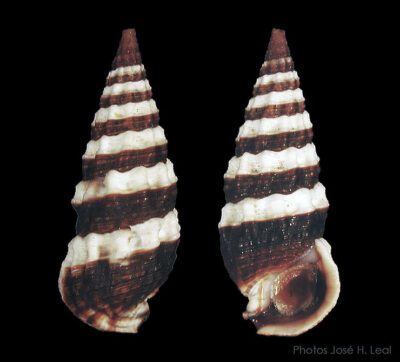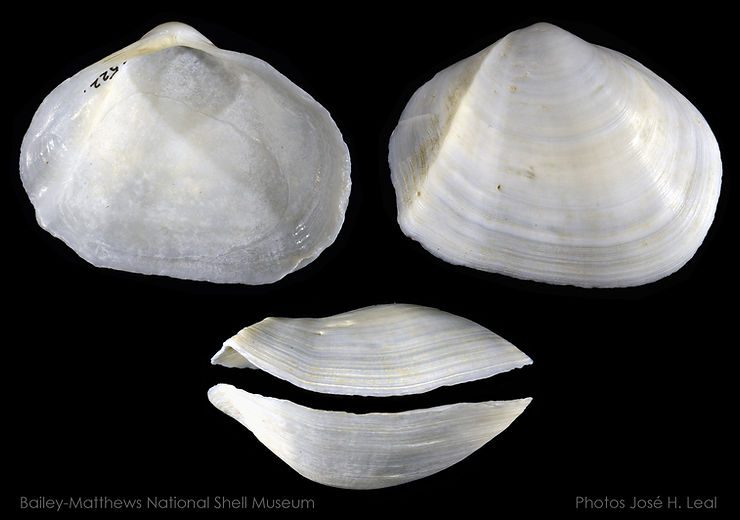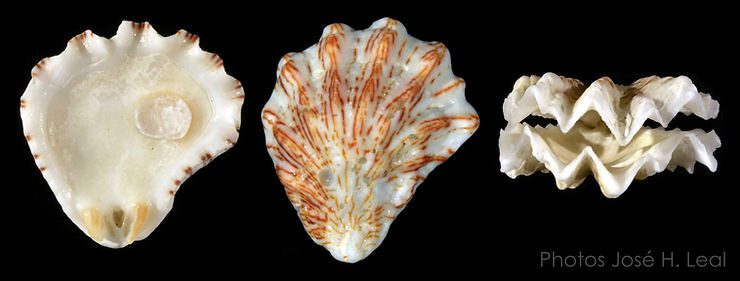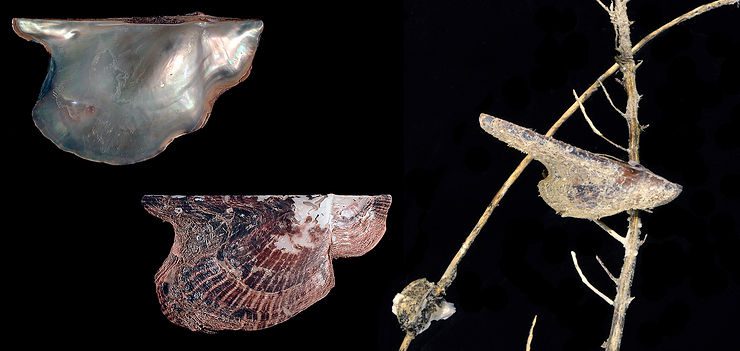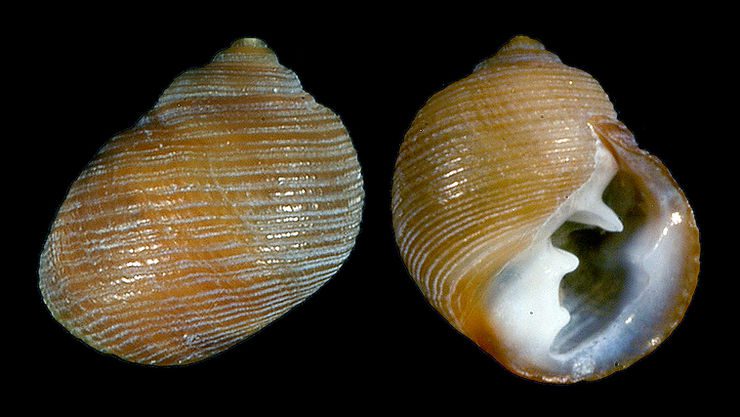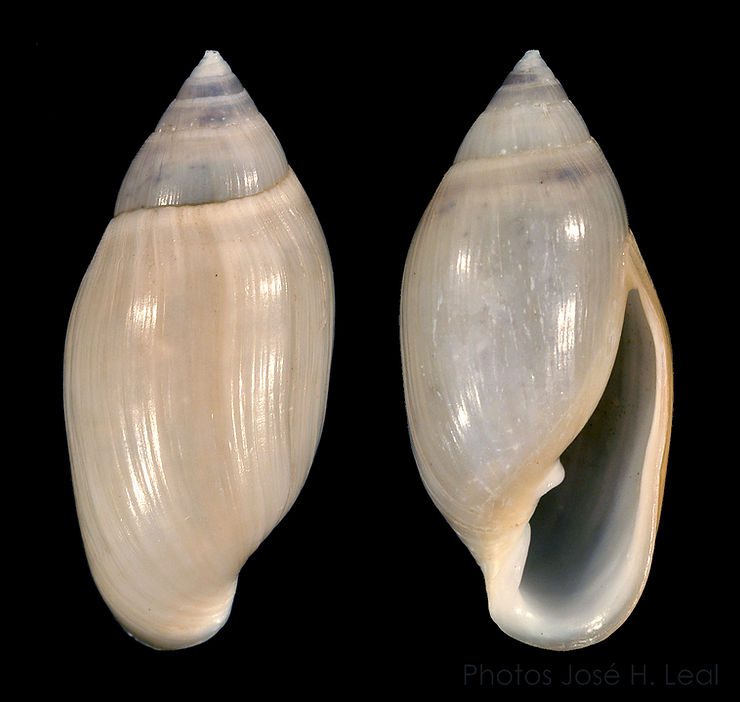
The Ladder Horn Snail
The Ladder Horn Snail, Cerithideopsis scalariformis (Say, 1825), is one of two local members of the family Potamididae. Its shell reaches about one inch in length, and is ornamented by a sculpture of 20–26 slanted, axial ribs per whorl. The ribs stop abruptly at a single, well-defined spiral cord located at the shell suture (line separating two adjacent whorls). The shell lip is typically white with two or three brown bands anteriorly (closer to the shell base). This species inhabits back-bay ar
